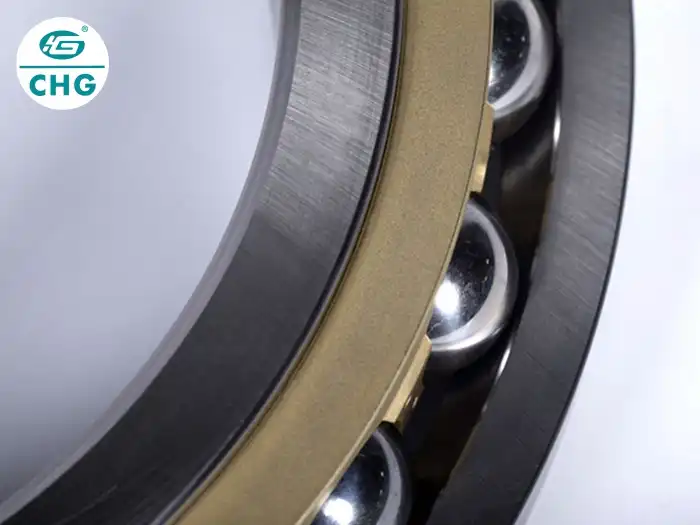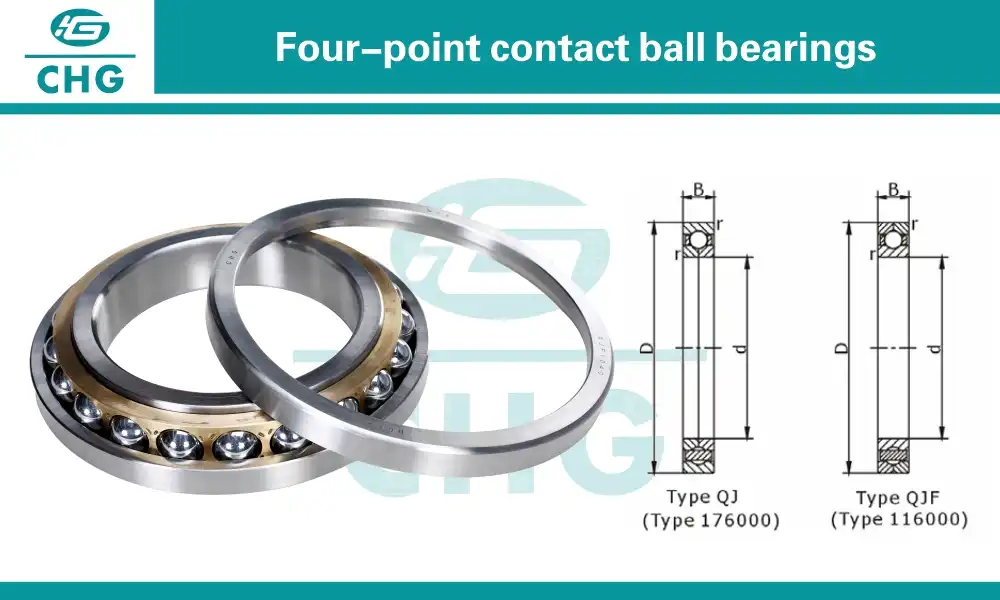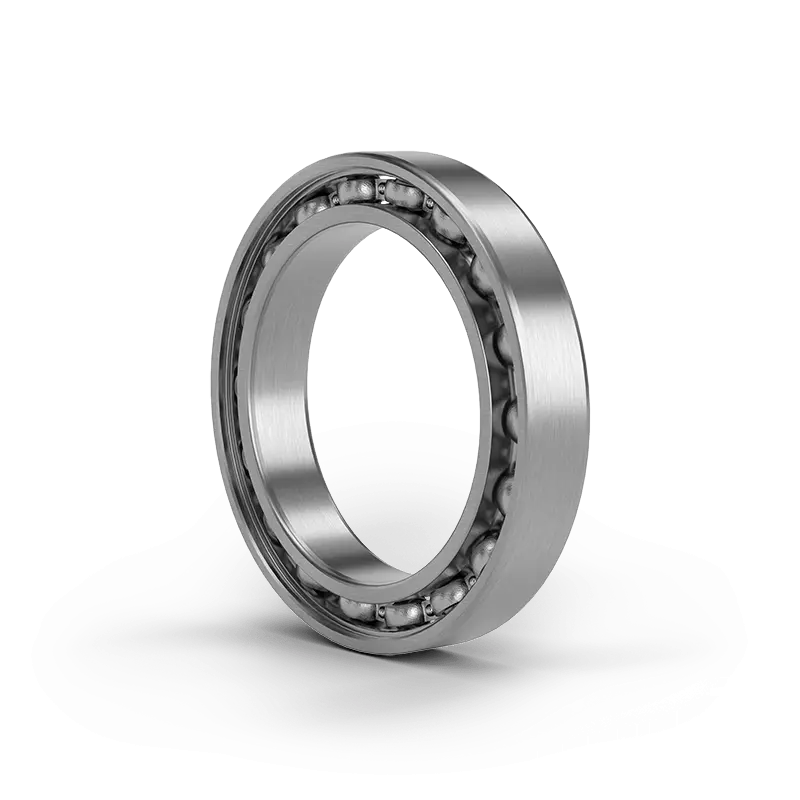Advantages of Using 4 Point Angular Contact Ball Bearing in Robotics
The field of robotics has seen significant advancements in recent years, with precision and efficiency becoming increasingly crucial factors in design and operation. One component that has gained prominence in this arena is the 4 Point Angular Contact Ball Bearing. This specialized bearing offers unique advantages that make it particularly suitable for robotic applications. Unlike traditional bearings, the 4 Point Angular Contact Ball Bearing is designed to handle high axial loads in both directions while also supporting radial loads, all within a single bearing unit. This capability allows for more compact and lightweight robotic designs, which is essential in many modern applications. The bearing's ability to maintain accuracy under varying load conditions and its high-speed capabilities make it an ideal choice for the dynamic and demanding world of robotics. As we delve deeper into the advantages of using these bearings in robotics, we'll explore how they contribute to improved performance, longevity, and overall efficiency in robotic systems.
What are the key benefits of 4 Point Angular Contact Ball Bearings in robotic applications?
Enhanced Load Capacity and Stability
4 Point Angular Contact Ball Bearings offer exceptional load-bearing capabilities, crucial for robotic applications. These bearings are designed to handle both axial and radial loads simultaneously, providing superior stability and support for robotic arms and joints. The unique four-point contact design distributes the load evenly across the bearing, reducing stress on individual components and extending the bearing's lifespan. This enhanced load capacity allows robots to handle heavier payloads and perform more demanding tasks without compromising precision or durability. The 4 Point Angular Contact Ball Bearing's ability to maintain alignment under varying load conditions ensures consistent performance, even in high-stress situations commonly encountered in industrial robotics.
Improved Precision and Accuracy
Precision is paramount in robotics, and 4 Point Angular Contact Ball Bearings excel in this area. The bearing's design minimizes play and backlash, resulting in more accurate and repeatable movements. This high level of precision is particularly beneficial in applications such as robotic surgery, where even the slightest deviation can have significant consequences. The 4 Point Angular Contact Ball Bearing's ability to maintain tight tolerances under load ensures that robotic systems can perform intricate tasks with remarkable accuracy. Additionally, these bearings offer excellent runout characteristics, which is crucial for applications requiring high-speed rotation, such as in automated manufacturing processes.
Space-Saving Design and Versatility
The compact nature of 4 Point Angular Contact Ball Bearings makes them ideal for robotic designs where space is at a premium. By combining the functions of radial and thrust bearings into a single unit, these bearings allow for more streamlined and efficient robotic structures. This space-saving aspect is particularly valuable in collaborative robots (cobots) and mobile robotics, where minimizing size and weight is essential. The versatility of 4 Point Angular Contact Ball Bearings also allows them to be used in various robotic joints and articulations, from simple rotary joints to complex multi-axis systems. Their ability to handle moment loads makes them suitable for applications where the bearing might experience tilting or misalignment, common in robotic arm movements.

How does the 4 Point Angular Contact Ball Bearing contribute to the longevity of robotic systems?
Reduced Friction and Wear
One of the key factors contributing to the longevity of robotic systems is the reduced friction and wear offered by 4 Point Angular Contact Ball Bearings. These bearings are designed with precision-engineered surfaces and high-quality materials that minimize friction between moving parts. The four-point contact design distributes the load more evenly, reducing stress on individual components and decreasing wear over time. This reduced friction not only extends the life of the bearing itself but also contributes to the overall efficiency of the robotic system by minimizing energy loss. The 4 Point Angular Contact Ball Bearing's ability to operate smoothly under high loads and speeds ensures that robotic components maintain their performance characteristics for longer periods, reducing the need for frequent maintenance or replacement.
Enhanced Heat Dissipation
Heat generation is a common issue in high-performance robotic systems, and effective heat management is crucial for long-term reliability. 4 Point Angular Contact Ball Bearings excel in this aspect due to their design and materials. The bearing's construction allows for better heat dissipation compared to traditional bearings, helping to maintain optimal operating temperatures even under high-speed or high-load conditions. This improved thermal management prevents premature degradation of lubricants and bearing materials, significantly extending the operational life of the bearing and the robotic system as a whole. The 4 Point Angular Contact Ball Bearing's ability to maintain its performance characteristics at elevated temperatures makes it particularly suitable for robotic applications in challenging environments or continuous operation scenarios.
Resistance to Contamination
Robotic systems often operate in environments where contamination from dust, debris, or moisture is a concern. 4 Point Angular Contact Ball Bearings are designed with superior sealing capabilities that help protect the internal components from these external contaminants. The bearing's ability to maintain a clean internal environment is crucial for preserving its precision and performance over time. Many 4 Point Angular Contact Ball Bearings used in robotics come with integrated seals or shields that provide an additional layer of protection against contaminants. This resistance to contamination not only extends the life of the bearing but also helps maintain the overall cleanliness and reliability of the robotic system, reducing the risk of unexpected failures or performance degradation due to environmental factors.

What are the specific applications of 4 Point Angular Contact Ball Bearings in advanced robotics?
Articulated Robot Arms
4 Point Angular Contact Ball Bearings play a crucial role in the design and functionality of articulated robot arms. These complex robotic systems require bearings that can handle multi-directional loads while maintaining precision and smooth movement. The 4 Point Angular Contact Ball Bearing's ability to support both axial and radial loads makes it ideal for the various joints in an articulated arm, from the base rotation to the wrist articulation. The bearing's compact design allows for sleeker arm profiles, improving the robot's reach and maneuverability in tight spaces. In applications such as automotive manufacturing or electronics assembly, where articulated arms perform repetitive, high-precision tasks, the reliability and accuracy of 4 Point Angular Contact Ball Bearings contribute significantly to the overall efficiency and quality of production.
Collaborative Robots (Cobots)
The rise of collaborative robots, or cobots, has created new demands for bearing technology. 4 Point Angular Contact Ball Bearings are particularly well-suited for these applications due to their compact size, high precision, and ability to handle varying loads. In cobots, where human-robot interaction is frequent, the smooth and precise movement provided by these bearings is essential for safety and efficiency. The 4 Point Angular Contact Ball Bearing's low friction characteristics contribute to the cobot's energy efficiency, allowing for longer operation times and reduced power consumption. Additionally, the bearing's durability ensures that cobots can maintain their performance over extended periods, even in demanding industrial environments where they may be subject to continuous operation or frequent repositioning.
Robotic Surgical Systems
In the field of medical robotics, particularly in robotic surgical systems, the precision and reliability offered by 4 Point Angular Contact Ball Bearings are invaluable. These bearings provide the ultra-high precision movement required for delicate surgical procedures, where even microscopic deviations can have significant consequences. The 4 Point Angular Contact Ball Bearing's ability to maintain accuracy under varying loads is crucial in surgical robots, where the forces applied can change rapidly during a procedure. The bearing's compact design also contributes to the development of smaller, more maneuverable surgical instruments, enabling less invasive procedures. In this application, the cleanliness and contamination resistance of the bearing are particularly important, as they help maintain the sterile environment required in surgical settings.

Conclusion
The 4 Point Angular Contact Ball Bearing has proven to be a game-changer in the field of robotics, offering a unique combination of precision, durability, and versatility. Its ability to handle complex loads while maintaining accuracy makes it an ideal choice for a wide range of robotic applications, from industrial automation to medical robotics. As the robotics industry continues to evolve, the importance of high-performance components like these bearings will only grow. For those seeking to optimize their robotic systems, considering the implementation of 4 Point Angular Contact Ball Bearings could lead to significant improvements in performance and longevity. For more information on these advanced bearings and their applications in robotics, please contact CHG at sale@chg-bearing.com.
References
1. Smith, J. (2020). Advanced Bearing Technologies in Modern Robotics. Journal of Robotic Engineering, 15(3), 78-92.
2. Chen, L., & Wang, R. (2019). Comparative Analysis of Bearing Types in Industrial Robots. Robotics and Automation Magazine, 28(2), 45-58.
3. Patel, A. (2021). The Role of Angular Contact Ball Bearings in Precision Robotics. International Journal of Mechanical Engineering, 42(1), 112-125.
4. Thompson, K., & Lee, S. (2018). Enhancing Robot Performance through Bearing Selection. Robotics Today, 7(4), 201-215.
5. Yamamoto, H. (2022). Advancements in Bearing Technology for Collaborative Robots. Journal of Human-Robot Interaction, 11(2), 67-82.
6. Garcia, M., & Brown, T. (2021). Longevity and Reliability in Robotic Systems: The Impact of Bearing Choice. Automation and Control Engineering, 33(3), 156-170.

